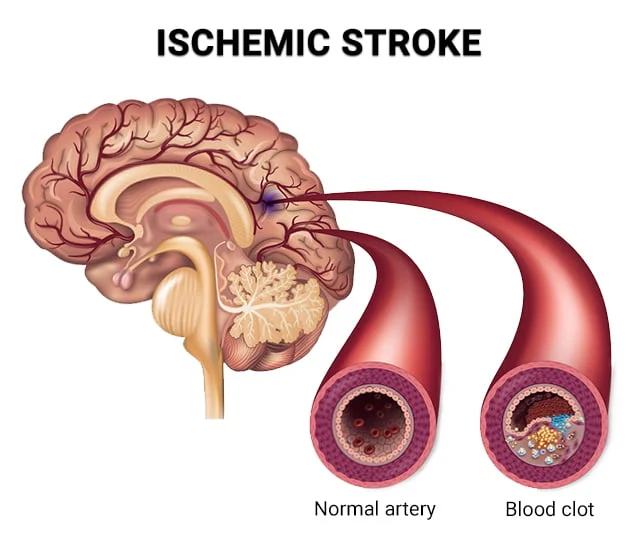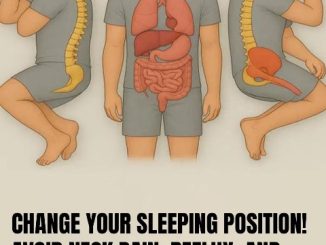You’re just going about your day—maybe enjoying a cup of coffee, texting a friend, or walking up the stairs—when something strange happens. Your leg suddenly feels heavy. Or maybe your smile feels uneven. You shake it off, thinking it’s nothing serious. But what if that moment was actually your body’s desperate cry for help?
That sudden sensation, that awkward stumble, or that strange slur in your voice might be more than fatigue or clumsiness—it could be a stroke. And ignoring it could cost you more than a moment of discomfort.
Let’s dive into what your body is trying to tell you—and why timing is everything.
What Exactly Is a Stroke?

Think of a stroke as a traffic jam in your brain. Blood flow, carrying oxygen and nutrients, suddenly gets blocked or interrupted—either by a clot (ischemic stroke) or by bleeding from a ruptured blood vessel (hemorrhagic stroke). Without that crucial blood supply, brain cells start dying. Fast.
That’s why doctors call stroke a “brain attack.” And just like a heart attack, it demands urgent attention.
The Sneaky Signs: Common Stroke Symptoms You Should Never Ignore
Strokes don’t always arrive with drama. Sometimes, they show up quietly. But make no mistake—when the brain’s in trouble, it speaks up in its own way.
Here’s what to watch for:
- Sudden weakness or numbness in your face, arm, or leg—especially if it’s just one side
- Facial drooping—your smile might look uneven or lopsided
- Slurred or jumbled speech—you might struggle to speak clearly or form words
- Trouble understanding language—even simple questions can feel confusing
- Vision issues—blurred, double, or loss of vision, often in one eye
- Loss of balance or coordination—feeling dizzy or unable to walk straight
- Severe headache—often described as “the worst headache of your life,” sometimes with nausea or vomiting
Remember: even if symptoms disappear quickly, it’s still a red flag.
It’s Not Always a Stroke—But Don’t Risk It
Part of what makes stroke dangerous is how easy it is to mistake it for something less serious. You might think it’s just a pinched nerve, stress, or low blood sugar.
Video : Strokes Explained
Here’s how a few conditions compare:
- Pinched nerve: Can cause numbness or weakness, but rarely affects speech or vision
- Migraine aura: May involve vision issues or tingling, but usually builds up gradually
- Bell’s palsy: Can mimic facial droop, but doesn’t usually include arm/leg weakness
- Low blood sugar (hypoglycemia): May cause confusion, but tends to improve with food
- TIA (mini-stroke): Often clears up fast, but is a serious warning sign of a future full stroke
The bottom line? Don’t guess. When it comes to stroke, it’s better to be safe than sorry.
Why Every Minute Matters: The Clock Is Ticking
Stroke is one of those conditions where time literally equals brain. The quicker you get help, the more brain tissue you can save—and the better your chances of recovery.
Within the first few hours of a stroke, doctors can administer treatments like clot-busting drugs or even surgical procedures to restore blood flow. But these only work if you act fast.
Here’s a simple acronym to help you remember how to spot and respond to a stroke:
F.A.S.T.
- Face – Ask the person to smile. Does one side droop?
- Arms – Can they lift both arms, or does one drift downward?
- Speech – Is speech slurred or strange?
- Time – If you see any of these signs, it’s time to call emergency services immediately.

Not All Strokes Shout—Some Whisper
The idea of a stroke usually brings to mind something dramatic. But in many cases, the signs are subtle.
A leg that feels “asleep.” A sentence that won’t come out right. A hand that suddenly drops the cup it was holding. These are the quiet whispers of a brain in distress.
And those whispers? They can turn into screams if you don’t act.
Recovery and Prevention: After the SOS
If someone survives a stroke, that’s only the beginning. Recovery often involves physical therapy, occupational therapy, and speech therapy. But what’s even better than recovery? Prevention.
You can lower your risk of stroke by:
- Managing blood pressure
- Keeping cholesterol in check
- Controlling diabetes
- Quitting smoking
- Limiting alcohol
- Eating a balanced diet
- Getting regular exercise
It sounds simple, but these habits are powerful. Stroke isn’t just about what happens in one frightening moment—it’s about the small decisions you make every day.
Video : Before a Stroke
Conclusion: Listen When Your Body Speaks
Your body is smarter than you think. It sends signals—tiny nudges, sharp tugs, subtle shifts—to let you know when something’s off. A stroke might start with just a weird feeling in your arm or a word that won’t roll off your tongue. But those aren’t moments to ignore—they’re flashing red lights on the dashboard of your health.
When your body sends an SOS, don’t wait around hoping it’s nothing. Respond. React. Reach out for help.
Because in the battle against stroke, every second truly does count. And recognizing the warning signs isn’t just smart—it could save your life.


